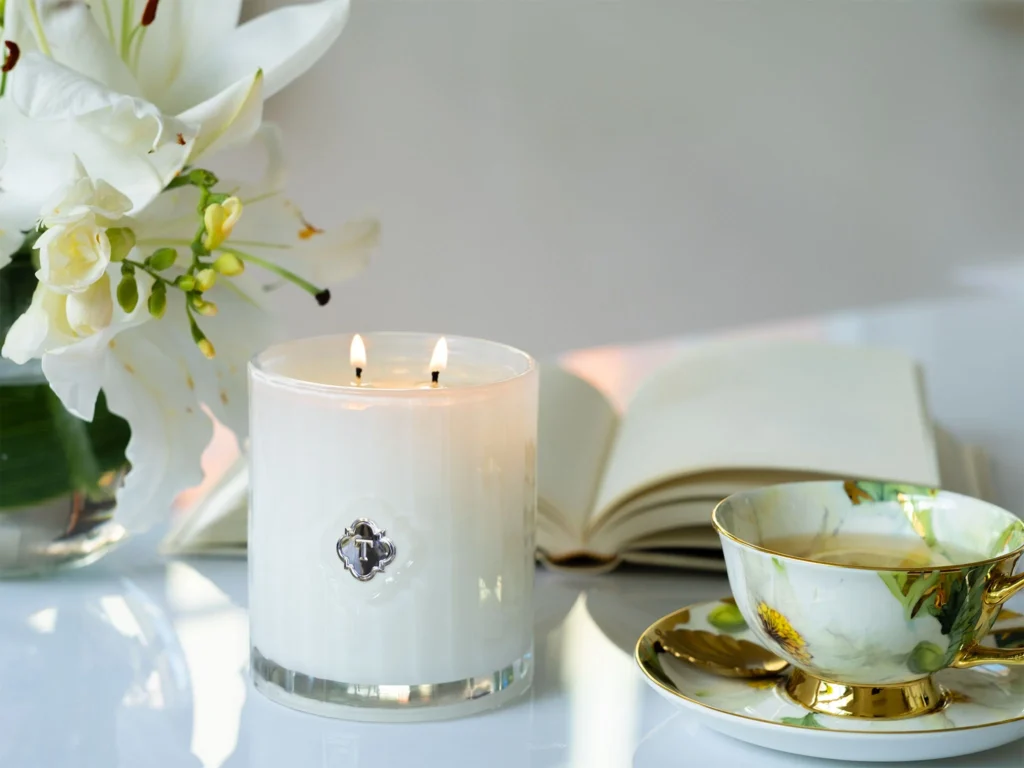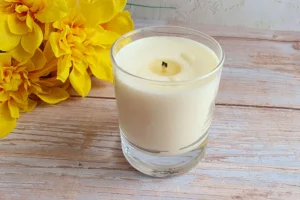Candles are not just sources of light but also symbols of relaxation and ambiance, adding warmth and charm to any space. However, moisture damage can jeopardize their quality and longevity. In this comprehensive guide, we’ll delve into the intricacies of moisture damage in stored candles, exploring its causes, repercussions, and effective preventive measures. By gaining insights into the risks and implementing proactive strategies, you can safeguard your candles against moisture damage, ensuring they remain exquisite and enduring companions in your home.
Understanding Moisture Damage

Moisture damage is the consequence of candles being exposed to excessive humidity or moisture, resulting in various adverse effects:
- Warping and Distortion: Elevated humidity levels can cause candle wax to absorb moisture, leading to warping, bending, or distortion of the candle’s shape. This not only compromises the visual appeal of the candle but also affects its functionality and burn quality, detracting from the overall experience.
- Mold and Mildew Growth: Moist conditions provide an ideal breeding ground for mold and mildew, which can proliferate on the surface of candles and their containers. Mold growth not only mars the appearance of candles but also poses health risks, compromising their safety for use and necessitating remedial action.
- Reduced Burn Performance: Moisture-laden candles may encounter difficulties in igniting or burning evenly, resulting in diminished performance and suboptimal burn quality. Wet wicks may struggle to absorb wax properly, leading to sputtering, tunneling, or premature extinguishing during burning sessions, frustrating the user experience.
Impact of Moisture Damage
The ramifications of moisture damage extend beyond mere cosmetic concerns:
- Aesthetic Degradation: Moisture damage can mar the appearance of candles, causing them to appear discolored, misshapen, or encrusted with mold. Such imperfections detract from the visual allure of candles, undermining their decorative function and diminishing their appeal as decorative accents in interior spaces.
- Compromised Safety and Hygiene: Mold growth on candles poses health risks, particularly for individuals with respiratory conditions or allergies. Inhaling mold spores released during burning can trigger allergic reactions or respiratory symptoms, necessitating caution and vigilance in addressing moisture damage to uphold safety and hygiene standards.
Best Practices for Avoiding Moisture Damage
Preventing moisture damage requires a proactive approach and meticulous attention to storage conditions:
- Choosing Suitable Storage Locations: Opt for storage areas characterized by cool, dry, and well-ventilated conditions to mitigate humidity levels and minimize the risk of moisture damage. Avoid storing candles in damp or humid environments such as basements, bathrooms, or attics, where moisture levels are inherently elevated.
- Utilizing Airtight Containers: Store candles in airtight containers or resealable plastic bags to shield them from moisture ingress and fluctuations in humidity levels. Ensure that containers are securely sealed to create a robust barrier against external moisture and preserve the integrity of the candles throughout the storage period.
- Elevating Storage Surfaces: Place candles on elevated surfaces such as shelves or racks to prevent direct contact with damp or moist surfaces. Avoid placing candles directly on countertops, floors, or other surfaces prone to moisture accumulation, which can exacerbate the risk of moisture damage and compromise the quality of the candles.
Tips for Maintaining Candle Quality
In addition to proactive prevention measures, regular maintenance is essential for preserving the quality of candles:
- Regular Inspection: Periodically assess stored candles for signs of moisture damage, including warping, discoloration, or mold growth. Promptly address any issues detected to prevent further deterioration and uphold the integrity of the candles, ensuring their longevity and performance.
- Cleaning and Maintenance Techniques: For candles affected by moisture damage, employ appropriate cleaning and maintenance techniques to restore their appearance and functionality. Use a soft cloth or sponge dampened with mild soap and water to gently clean the surface of the candles, meticulously removing any mold or mildew growth to restore them to their original condition.
Long-Term Strategies for Moisture Prevention
To safeguard candles against moisture damage over the long term, consider implementing the following strategies:
- Humidity Control: Invest in humidity control devices such as dehumidifiers or moisture absorbers to regulate humidity levels in storage areas. Regularly monitor humidity levels and make necessary adjustments to prevent moisture buildup and protect candles from the detrimental effects of excessive humidity.
- Rotation of Candle Stock: Rotate your candle stock regularly to ensure that candles are used within their optimal shelf life and prevent prolonged storage. By incorporating older candles into your rotation, you can minimize the risk of moisture damage due to extended storage and fully appreciate the beauty and fragrance of your candles.
Conclusion
Moisture damage presents a formidable challenge to the quality and longevity of stored candles, compromising their appearance, performance, and safety. By gaining insights into the risks associated with moisture exposure and implementing proactive preventive measures, you can shield your candles from damage and preserve their exquisite beauty and functionality. Whether through diligent storage practices, meticulous maintenance, or comprehensive long-term strategies for moisture prevention, proactive care and attention to detail are paramount. Let these insights serve as your guide in safeguarding your candles against moisture damage, ensuring they remain timeless treasures in your home for years to come.




